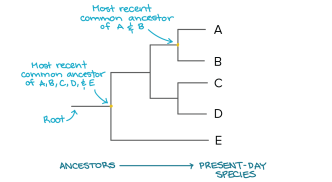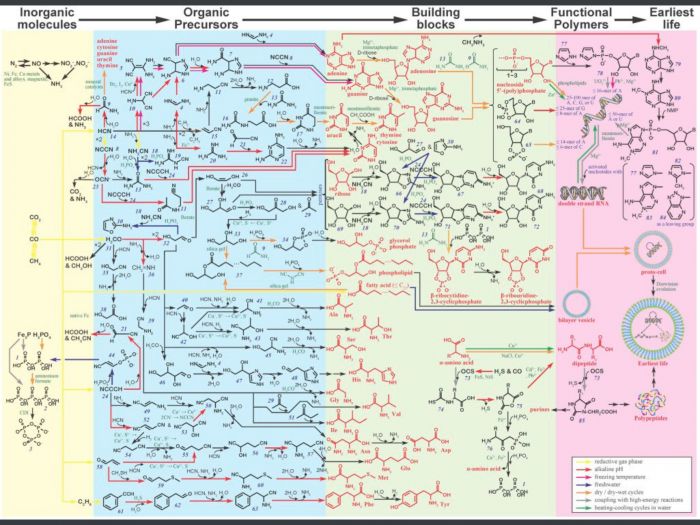We
We are all more closely related than you think. The traditional way to view how life developed on earth was in stages (as you can see to the right). The tree illustrates how all life was once one thing (on the left) and progresses into being us, the most complex form of life on the planet.
But the root has always posed a problem.Where did it come from? The old chicken or egg problem. Science has found that life started from simple inorganic molecules[1][2], which interacted to make other molecules which could replicate themselves. Imagine, the simplest thing that can replicate itself, however every billion replications an error inevitably occurs which starts a new type of replicant. After this, it was just a matter of billions of years (a blink of an eye in earth's history) before more complicated organic replicants came to being.
Once the earliest life was created it took another 3.5 billion years for it to make us. Whilst the stepped classification is useful to scientists, as it makes digestible chunks, in the real world the process is much more fluid. Similar to the roots of a tree branching out, although many stems are produced it is still the same macro organism travelling through time, as shown below.
We are all more closely related than you think as we are simply the structures that result from our replicating material, DNA. Much the same as how html is the code that built this website.
References
- ↑ Dodd, Matthew S.; Papineau, Dominic; Grenne, Tor; Slack, John F.; Rittner, Martin; Pirajno, Franco; O'Neil, Jonathan; Little, Crispin T.S. (1 March 2017). "Evidence for early life in Earth's oldest hydrothermal vent precipitates". Nature. 543 (7643): 60–64. Bibcode:2017Natur.543...60D. doi:10.1038/nature21377. PMID 28252057. Archived from the original on 8 September 2017. Retrieved 2 March 2017.
- ↑ Witzany, Guenther (2016). "Crucial steps to life: From chemical reactions to code using agents" (PDF). BioSystems. 140: 49–57. doi:10.1016/j.biosystems.2015.12.007. PMID 26723230.


